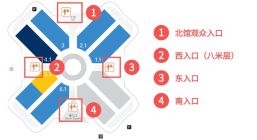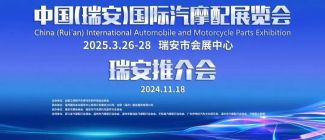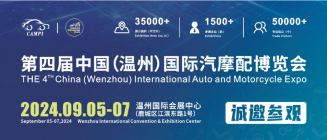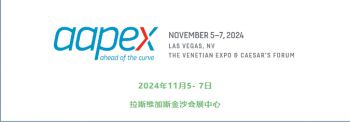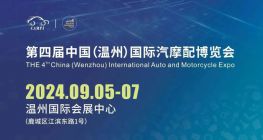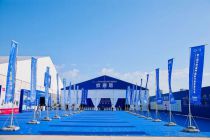Under the car market winter, an epidemic let more car companies "load forward", also let the car market vitality. In order to make up for the losses caused by the epidemic and stimulate the new vitality of the automobile market, a series of rescue policies followed, such as foshan, guangzhou, zhuhai, changsha and other places have introduced policies to encourage automobile consumption. In these local rescue policies, there is no lack of "buy 'country six' standard new car, each car to x yuan subsidy" information.
It can be seen that encouraging the upgrading of vehicle emissions has become a common practice to boost the market, which can not only relieve the pressure of environmental protection, but also stimulate consumption, killing two birds with one stone. However, July 1 will be the date: country vi a will be implemented nationwide. To this, industry appears again "delay implementation" call. What difficulties does China's sixth emissions upgrade face? Are the car companies ready? Under the epidemic situation, can delaying the implementation of country 6 emissions be regarded as the "rescue" medicine? Let's analyze them one by one.

Policy, epidemic, emission escalation, country 6,PN limit
"Country six" mark current
July 1, 2020 was originally the date for the nationwide implementation of country 6 a. However, due to environmental pressure, many regions have brought forward the implementation date to July 1, 2019 or January 1, 2020.
Specific policies for, on December 23, 2016, the ecological environment joint state general administration of quality supervision issued the light vehicle emission limits and measurement methods (stage 6) in China "(GB 18352.6-2016) standard, and according to the requirements of the different standard limit, to formulate" the six a "and" the six b "two stages in the implementation of light vehicle the six emission standards. As of July 1, 2020, all light vehicles sold and registered should meet the requirements of standard country 6 a, and as of July 1, 2023, all light vehicles sold and registered should meet the requirements of standard country 6 b.
As far as the standard limit is concerned, country 6 b is even stricter, which is described by the industry as "the strictest in history". However, country vi a and country vi b are exactly the same in terms of the limit of the number of particles with diameters exceeding 23nm (PN).
The PN limit is the crux of the problem. Because, considering the actual situation of industrial development, the PN limit of country 6 automobile products is set as 6.0×1012 /km in the regions where country 6 emission is implemented in advance. After July 1, 2020, the PN limit value will resume the implementation of the standard, which is 6.0×1011 /km. The difference between the two limits is a factor of 10, and some carmakers may have trouble switching models or getting to market due to the outbreak.
What's more, according to incomplete statistics, including key regions, the Yangtze river delta, the pearl river delta and other areas where the implementation of the country's six standards has been advanced car sales volume accounted for two-thirds of the country. It can be seen that the coverage of "country six" cars with transitional PN limit standard is wide.
Enterprises encounter practical difficulties
From 2000 to 2019, it took China 19 years to upgrade its vehicle emission standards from country 1 to country 6, compared with about 30 years in Europe and the us. Under the pressure of environmental protection, the time is tight and the task is heavy, so every time the emissions upgrade, the industry has to overcome some difficulties more or less. This upgrade of the five countries is no exception to the six countries.
1. Technical and cost difficulties
In the process of emission upgrading, automobile companies are primarily faced with technical challenges, and the technical upgrading brings about an increase in costs. According to previous media reports, in terms of emission upgrading, most models can meet the requirements of emission upgrading in engine hardware, and the major cost increase is reflected in the upgrading of exhaust treatment. Among them, the upgrading cost of light gasoline vehicles is about 1,200 yuan, and that of light diesel vehicles is about 4,000 yuan.
However, costs will fall as the number of cars sold increases. According to incomplete statistics, by the end of 2019, 90 percent of new cars sold nationwide were already national 6 emission models.
2. Product disconnection dilemma
If technology and cost are the "required questions" for emissions upgrading, then what are the practical difficulties for the emissions of the implementing country vi a on July 1?
According to the introduction of the China association of automobile manufacturers (caam), many automobile companies originally planned to start production and launch in April 2020 to meet the PN limit of the sixth national standard (6.0 × 1011 / km). However, due to the outbreak of the epidemic, the resumption of production is delayed, the production time of the above products is expected to be delayed by about three months. Add in certification, testing, road testing and so on, and the delay will be 2-6 months, maybe even 12 months.
This also means that many car companies after July 1, no emissions standards car can be sold! More ominously, if a large number of the country's six cars (the PN limit is 6.0×1012 /km) that meet the interim emissions have not been cleared, the next scene will be very difficult.
3. High inventory risk
Car circle of sales managers often say that "inventory is the root of all evil," and the current car market overall inventory situation is not optimistic. According to the survey results of the China association of automobile manufacturers, there are about 260,000 vehicles in the inventory of the five countries in the industry. By January 2020, there were about 3.14 million cars in inventory in country 6 of the industry, of which the PN limit of some models was 6.0×1012 /km (six cars in transition period). Most enterprises could not digest their inventory on schedule except a few enterprises that were fully prepared.
According to the data released by China automobile distribution association, the comprehensive inventory coefficient of auto dealers in February was 14.8, up 6 times year-on-year and 8 times month-on-month, with the inventory level above the warning line.
Instead of worrying, face it head on
In view of the difficulties faced by the above-mentioned automobile enterprises, the Chinese association of automobile manufacturers said in its production and sales data release that under the epidemic situation, the management policy should be actively adjusted to reduce the burden on enterprises, which mentioned to delay the transition period of six PN restrictions.
Calls for a moratorium on the implementation of the sixth amendment are not uncommon in the industry. When the car market fell in 2019, there were calls in the industry for the postponement of the sixth country. This time, the car market was hit hard by the epidemic, and there are still calls for the postponement of the sixth country. Is delaying the implementation of emission standards really the medicine to save the market? Not really.
According to views gathered from different sources, there are many people who believe that delaying the implementation of the sixth emission standard will do more harm than good. The reasons are listed as follows: 1. 2. The mainstream automobile enterprises have completed the switch of the products of country 6. If the implementation of country 6 is delayed, it will only buy a little time for the extremely weak automobile enterprises. 3. For consumers who have purchased products from six countries, there will be a psychological gap. 4. Upset the planning and process of the whole auto industry. 5. The credibility of policy makers declines. 6, comprehensive factors may cause the car market delay time to lengthen.
In contrast, more people agree with the policies to stimulate automobile consumption issued by the municipal government, believing that it is feasible to promote consumption and economic growth.
Some active car company insiders said, if the release of the rescue policy, the six postponement is not significant. Such bail-outs, such as halving the purchase tax, are what most people want. "However, the environment is not good, more car companies or from their own to do, [market performance] will be better and better, bad will be worse." A car salesman said so.
In general, whether it is the delay of the sixth emission standard, or the extension of the PN limit period, or to stimulate the automobile consumption policy, auto companies subsidize users out of their own pocket... The original intention of this kind of practice, is to let the car market in the winter can be more warm. However, the market competition is always cruel, the market is poor, the more can reflect the enterprise's comprehensive competitiveness level. Because, natural selection, survival of the fittest, the law of the jungle.
AMS2024 Exhibition Guide | Comprehensive Exhibition Guide, Don't Miss the Exciting Events Online and Offline
Notice on Holding the Rui'an Promotion Conference for the 2025 China (Rui'an) International Automobile and Motorcycle Parts Exhibition
On September 5th, we invite you to join us at the Wenzhou Auto Parts Exhibition on a journey to trace the origin of the Auto Parts City, as per the invitation from the purchaser!
Hot Booking | AAPEX 2024- Professional Exhibition Channel for Entering the North American Auto Parts Market
The wind is just right, Qianchuan Hui! Looking forward to working with you at the 2024 Wenzhou Auto Parts Exhibition and composing a new chapter!
Live up to Shaohua | Wenzhou Auto Parts Exhibition, these wonderful moments are worth remembering!
Free support line!
Email Support!
Working Days/Hours!
